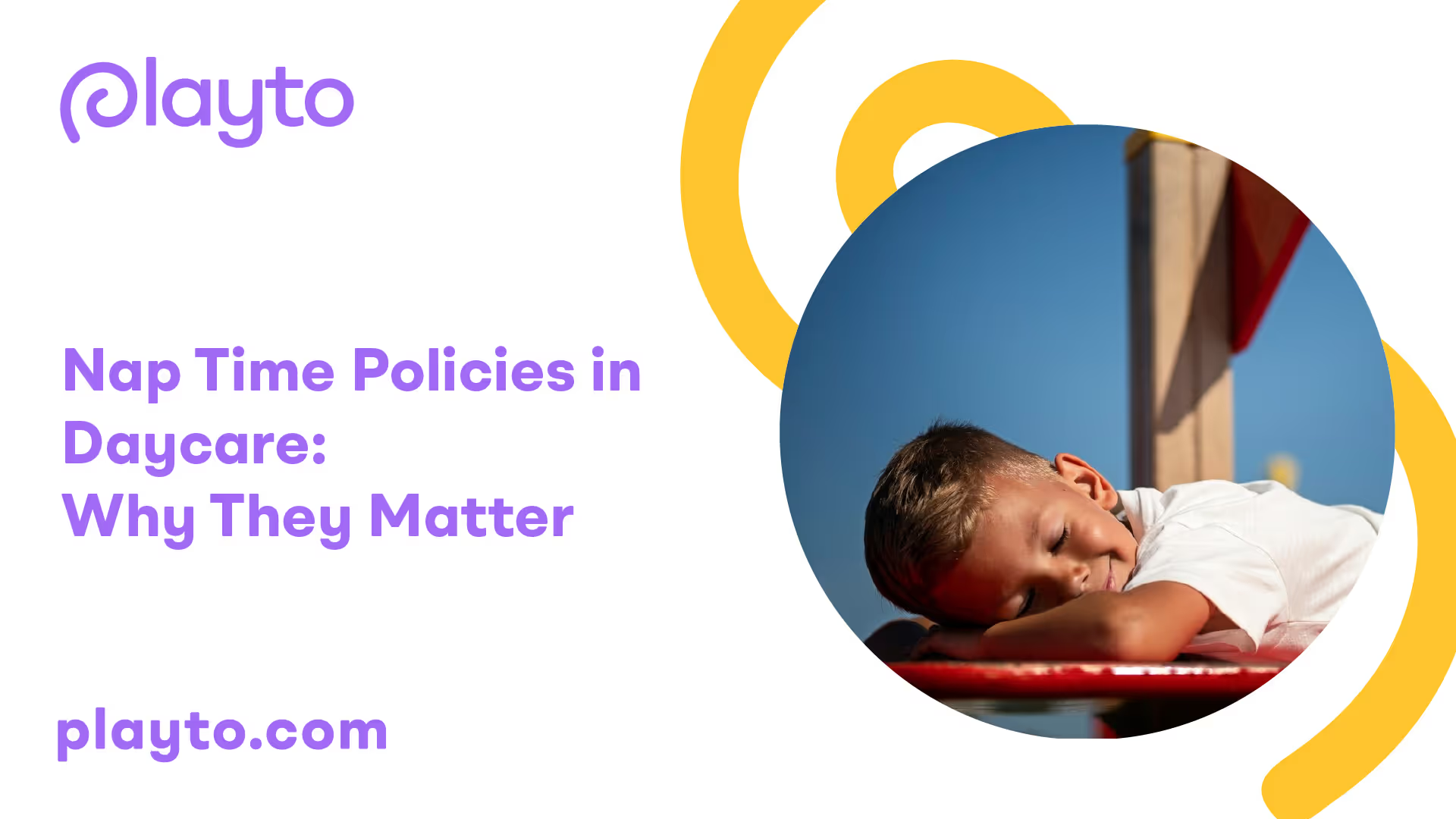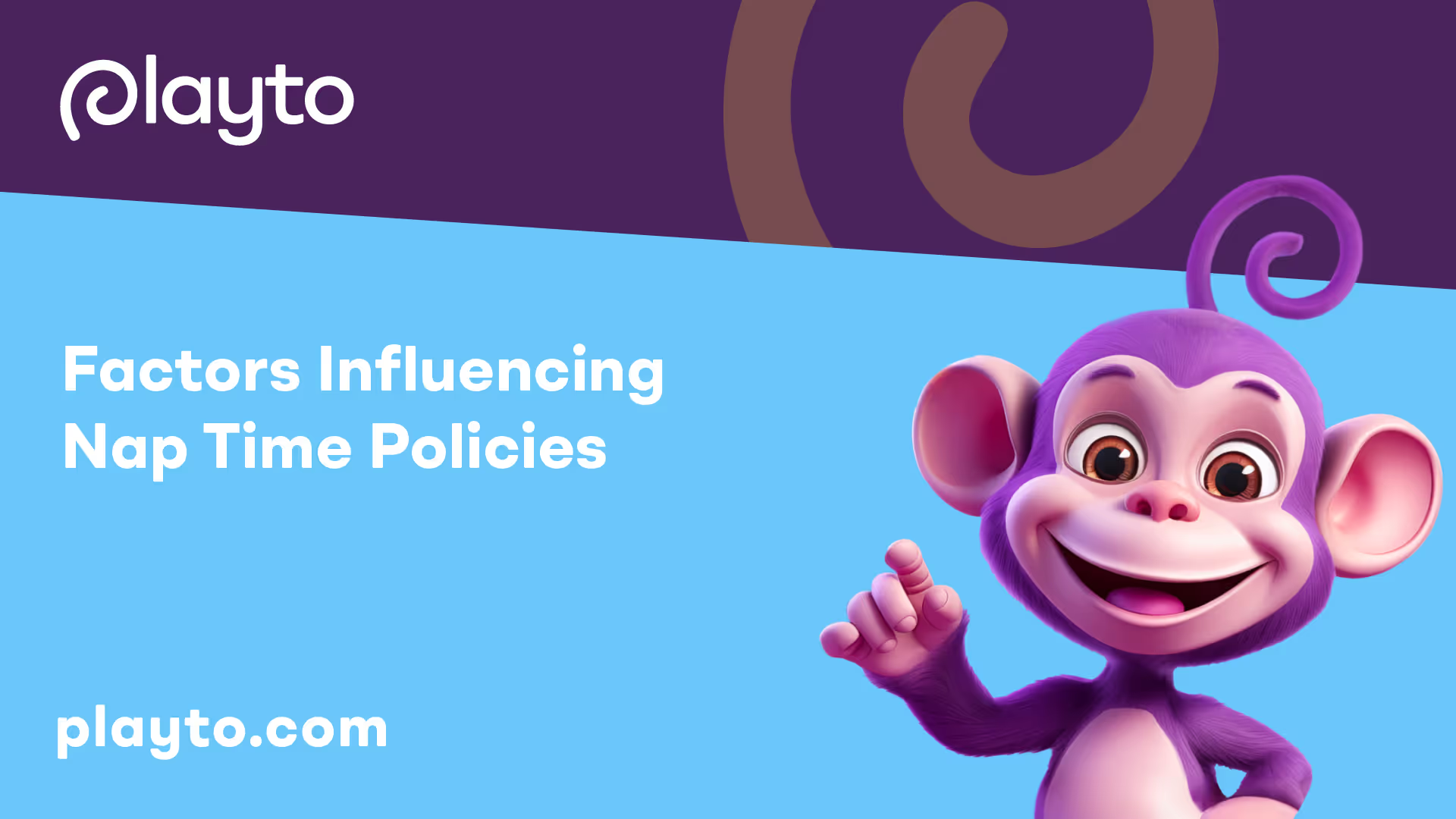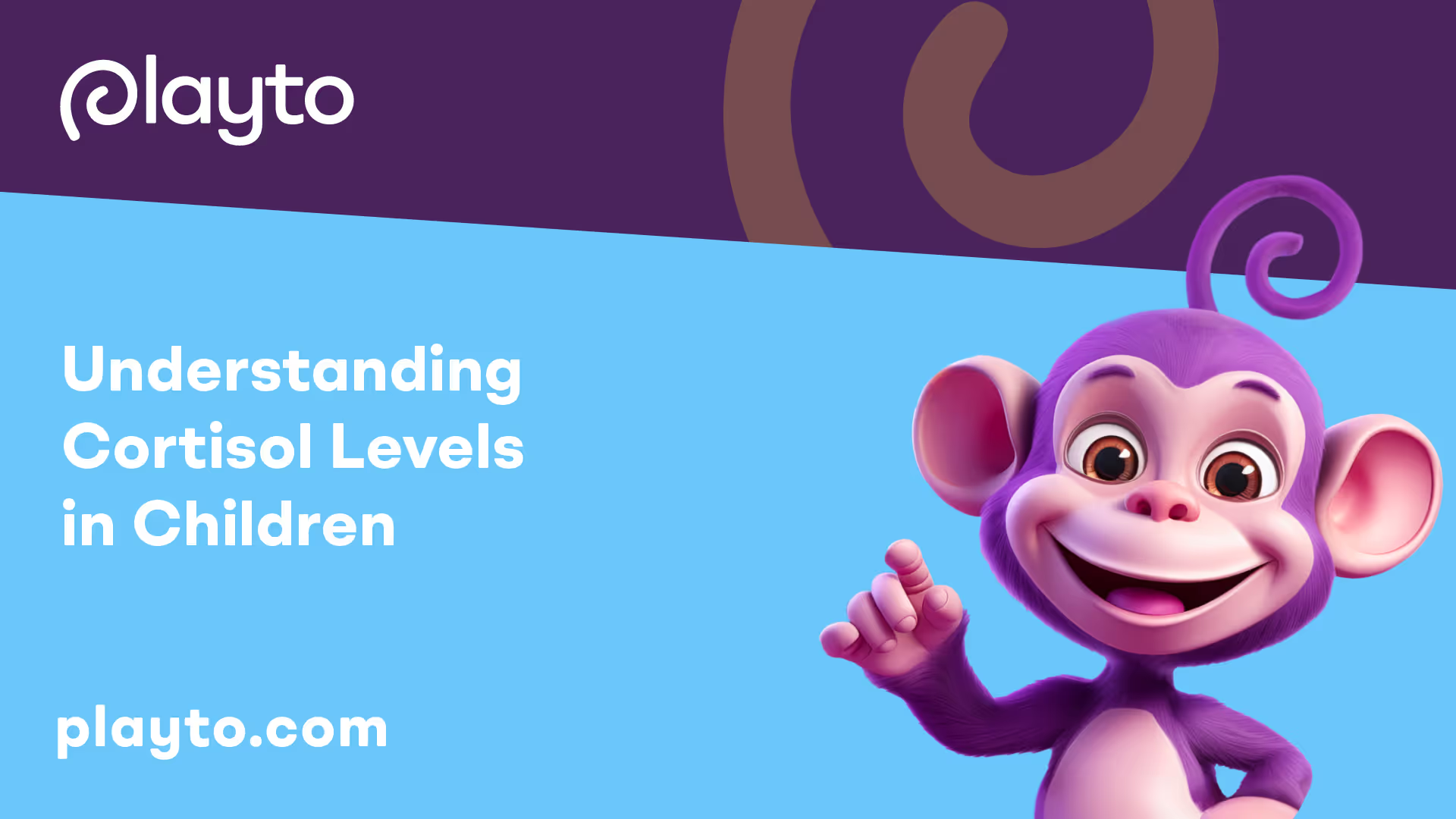The Importance of Nap Time in Daycare
Nap time is a crucial component of a daycare's daily schedule, providing numerous benefits for children's development and well-being. In this section, we will explore the importance of nap time in daycare, focusing on cognitive development and the impact of daytime naps on memory.

Cognitive Development in Early Childhood
During early childhood, the brain undergoes rapid development, and sleep plays a vital role in supporting cognitive growth. Research has shown that daytime napping is particularly crucial for children under the age of 5, as it contributes to memory consolidation and generalization of learned information.
Napping has been found to enhance declarative memories in infants and preschoolers. Experimental studies have demonstrated that children who nap perform better on memory tasks, showing improved memory consolidation and recall compared to those who do not nap [1]. Furthermore, habitually napping children tend to benefit more from daytime sleep in terms of memory consolidation and generalization compared to non-habitual nappers, highlighting the importance of regular napping in supporting cognitive abilities [1].
Impact of Daytime Naps on Memory
Daytime naps have a significant impact on memory function in young children. Research has found that napping enhances memory performance and learning outcomes in preschoolers. For example, a study revealed that children who napped performed significantly better on a visual-spatial task in the afternoon after a nap and the following day compared to those who did not nap.
Another study demonstrated that children who were kept awake forgot significantly more item locations on a memory test compared to those who had taken a nap. The results indicated that after a nap, children recalled 10 percent more test locations, emphasizing the role of napping in memory consolidation and early learning.
By incorporating scheduled nap times into the daycare routine, children have the opportunity to recharge and consolidate the information they have learned throughout the day. Naps support memory formation, enhance cognitive abilities, and contribute to overall cognitive development in early childhood.
As we explore further in this article, understanding the factors influencing nap time policies and implementing effective schedules tailored to child ages are key components in maximizing the benefits of nap time in daycare settings.
Factors Influencing Nap Time Policies
When it comes to establishing nap time policies in daycares, several factors come into play. These factors are crucial in ensuring that nap time is tailored to meet the needs of each child in the daycare setting. Two key factors that influence nap time policies are age-related sleep patterns and the effects of mandated naptimes in daycares.

Age-Related Sleep Patterns
Sleep patterns change as children grow, and understanding these age-related patterns is essential for effective nap time policies. According to research from the NCBI, the total sleep time decreases with age in children. For example, infants aged 0 to 2 years typically have an average of 1.7 naps per day, with the duration of daytime naps decreasing from around 3.5 hours at 1 month to about 1 hour at 2 years.
Daycare providers must be aware of these age-related sleep patterns to create appropriate nap time schedules that align with the developmental needs of each child. Adjusting the duration and frequency of naps based on age helps to ensure that children receive sufficient rest during the day while also promoting healthy sleep patterns.
Effects of Mandated Naptimes in Daycares
Mandated naptimes, where children are required to lie down without alternative activities, are a common practice in many daycare settings. However, research from the NCBI suggests that the majority of preschool-aged children (3-5 years) no longer habitually nap. For children who do not naturally nap, mandatory nap times may induce stress and reduce the quality of their overall daycare experience.
The study further indicates that mandatory naptimes can lead to a reduction in the emotional climate of the daycare environment and an increased incidence of distress. Additionally, children who do not nap during mandated nap times may experience attenuated declines in cortisol levels, a hormone associated with stress regulation.
Considering these findings, it becomes imperative for daycare providers to evaluate the effectiveness of mandatory naptime policies, particularly for older children who no longer require naps. Flexibility in naptime policies can provide alternatives for non-nappers, ensuring that their needs for rest and relaxation are met without causing unnecessary stress. This flexibility can contribute to a positive and supportive daycare environment for all children.
Understanding the influence of age-related sleep patterns and the effects of mandated naptimes helps daycare providers make informed decisions when establishing nap time policies. By taking into account the unique sleep needs and preferences of each child, daycares can create a nurturing and developmentally appropriate environment that supports healthy sleep habits. For more information on daycare-related topics, check out our articles on potty training support in daycare centers, communicating with your child's daycare provider, signs of a high-quality daycare center, and the cost of daycare: what to expect and how to budget.
Understanding Cortisol Levels in Children
In daycare settings, understanding the impact of nap time on cortisol levels in children is essential for promoting their well-being and development. Cortisol, often referred to as the stress hormone, plays a crucial role in regulating various physiological processes. Let's explore the variations in cortisol levels during nap time and the impact of non-napping on these levels.

Cortisol Variation during Nap Time
Research has shown that cortisol levels in children exhibit significant diurnal changes throughout the day. A study published in NCBI revealed a noticeable decline in cortisol levels from wake time to pre-naptime and from post-naptime to bedtime. However, there was no significant change in cortisol levels between pre- and post-naptime.
Impact of Non-Napping on Cortisol Levels
For children who are under mandatory naptime conditions but do not actually nap, the decline in cortisol levels from post-naptime to bedtime may be attenuated. The same study mentioned earlier found that children who did not nap during mandatory naptime did not show a significant reduction in cortisol levels from post-naptime to bedtime. This indicates that exposure to mandatory naptime practices for preschool-aged children who do not sleep may impact the decline in cortisol levels.
These findings suggest that nap time plays a role in regulating cortisol levels in children. It is important to note that cortisol levels are influenced by various factors, including the child's age, individual sleep patterns, and environmental conditions. Therefore, nap time policies in daycare centers should consider these factors to ensure the well-being of each child.
By understanding the variations in cortisol levels during nap time and the potential impact of non-napping on these levels, daycare providers can make informed decisions regarding nap time policies. Taking an individualized approach and considering each child's needs and sleep patterns can contribute to a nurturing environment that supports the child's development and overall well-being.
As you navigate the world of daycare, we have articles on various topics such as potty training support in daycare centers, communicating with your child's daycare provider, signs of a high-quality daycare center, and the cost of daycare: what to expect and how to budget that can provide you with valuable information to make informed decisions.
Behavioral Management in Daycare
In daycare settings, effective behavioral management is crucial for creating a positive and productive learning environment for children. Proper behavior management not only reduces disruptions but also helps children develop important social and emotional skills that set them up for success in kindergarten and beyond.
Importance of Behavior Management
Behavior management plays a critical role in maintaining the safety and reputation of daycare centers. By addressing behavioral issues promptly and consistently, providers can prevent safety concerns, conflicts, and negative perceptions. It creates a structured environment that supports learning and encourages positive interactions among children.
According to Procare Software, learning positive behavior is a key developmental outcome for children in daycare centers. It helps them develop self-control, empathy, and respect for others. When children are exposed to an environment that promotes appropriate behavior, they are more likely to exhibit good conduct both in the daycare setting and in their future educational experiences.
Strategies for Managing Child Behavior
To effectively manage child behavior in daycare settings, providers employ various strategies that promote positive conduct and minimize disruptive behaviors. Here are some key strategies:
- Setting clear expectations: Clearly communicating behavioral expectations to children helps them understand what is acceptable and what is not. Consistent reinforcement of these expectations helps children internalize appropriate behaviors.
- Creating structured environments: Establishing routines and structured environments helps children feel secure and understand what is expected of them. Consistency in schedules and daily activities allows children to anticipate and navigate their day, reducing anxiety and disruptive behaviors.
- Considering situational and environmental factors: Recognizing the impact of situational and environmental factors on behavior is essential. For example, understanding that tiredness or hunger can affect a child's behavior allows providers to address these needs and create a more conducive environment for positive behavior.
- Encouraging good behavior with praise: Positive reinforcement is a powerful tool in shaping behavior. Praising children for their good behavior and efforts reinforces positive conduct and motivates them to continue exhibiting appropriate behaviors.
- Collaborating with parents: Open and regular communication with parents is vital for managing child behavior effectively. By sharing information about a child's behavior and progress, providers and parents can work together to maintain consistency and reinforce positive behavior both at daycare and at home.
By implementing these strategies, daycare providers can create an environment that supports the social, emotional, and behavioral development of children. Positive behavior management fosters a sense of community among children, promotes a love for learning, and prepares them for future educational experiences.
Creating an Effective Daycare Schedule
When it comes to running a daycare, creating an effective schedule is crucial for providing structure and meeting the needs of the children in your care. A well-planned schedule takes into account the developmental milestones of the children and tailors activities to their ages.
Developmental Milestones and Scheduling
Understanding the developmental milestones of children is essential when structuring a daycare schedule. Milestones refer to the typical skills and abilities that children acquire at different ages. By aligning activities with these milestones, you can ensure that the children are engaged in age-appropriate tasks that support their growth and progress.
For example, infants require more frequent naps and feedings, while toddlers may be more ready for group activities and interactive play. By considering these milestones, you can plan activities that stimulate their cognitive, social, and physical development.
It's important to note that local regulations also influence daycare schedules. Laws may dictate minimum outdoor time, nap requirements for infants and toddlers, meal times, and even the separation of different age groups into separate rooms. Adhering to these regulations ensures that your daycare operates within the legal framework and provides a safe and nurturing environment for the children.
Tailoring Schedules to Child Ages
The ages of the children in your daycare play a significant role in determining the duration and types of activities included in the schedule. Younger children generally have shorter attention spans and may require more frequent breaks and transitions. As a general guideline, a child's attention span can be estimated by multiplying their age by four minutes. This can help you plan activities that align with their attention spans and prevent them from becoming overwhelmed or disengaged [4].
Older children, on the other hand, are capable of engaging in activities for longer periods of time. They may benefit from more structured learning activities, such as circle time, arts and crafts, or storytime. By tailoring the schedule to the specific age group you are catering to, you can ensure that the children are appropriately challenged and engaged throughout the day.
Additionally, the layout of your daycare facility should be considered when creating a schedule. The facility layout can influence the arrangement of activities, such as nap times, outdoor play, and noise levels. A well-designed schedule takes into account the flow of the facility and ensures that children have access to different areas while maintaining a safe and organized environment.
By considering the developmental milestones of the children and tailoring the schedule to their ages, you can create an effective daycare schedule that promotes their growth and development. A thoughtfully planned schedule provides structure, engages the children in age-appropriate activities, and ensures a positive and enriching experience for everyone involved.
Research on Napping and Cognitive Function
Understanding the relationship between napping and cognitive function is crucial when considering the importance of nap time in daycare settings. Research has shown that napping can have significant effects on learning and neurocognitive development in children.
Effects of Napping on Learning
Experimental studies have demonstrated that daytime naps have a beneficial impact on declarative memories in infants and preschoolers. Napping influences cognitive functions such as memory consolidation and generalization of learned information [1]. Longitudinal studies have also indicated a relationship between daytime naps and later cognitive measures in children, with some studies showing a positive association between more frequent daytime naps and vocabulary growth.
A study conducted on preschool children found that habitually napping children benefited more from daytime sleep in terms of memory consolidation and generalization compared to non-habitual nappers. Sleep spindles, which are brief bursts of brain activity during sleep, showed correlations with cognitive abilities and performance. These findings highlight the importance of incorporating nap time into the daycare schedule to support optimal cognitive development and learning.
Neurocognitive Benefits of Napping
Napping has been found to have a positive impact on various neurocognitive processes. For example, children who napped performed significantly better on a visual-spatial task in the afternoon after a nap and the following day compared to those who did not nap. This suggests that naps are critical for memory consolidation and early learning in preschool children [2].
Furthermore, the timing of naps in relation to learning appears to be crucial. The same study mentioned above showed that children performed significantly better when they napped in the afternoon and the next day. This highlights the importance of having nap time close to learning activities. Missing a nap means the child cannot fully recover the benefits of sleep with overnight sleep alone.
By incorporating regular nap time into daycare schedules, children have the opportunity to enhance their learning abilities, consolidate memories, and support their overall cognitive development. Understanding the positive effects of napping on learning can help daycare providers make informed decisions regarding nap time policies and create an environment conducive to optimal cognitive function.
